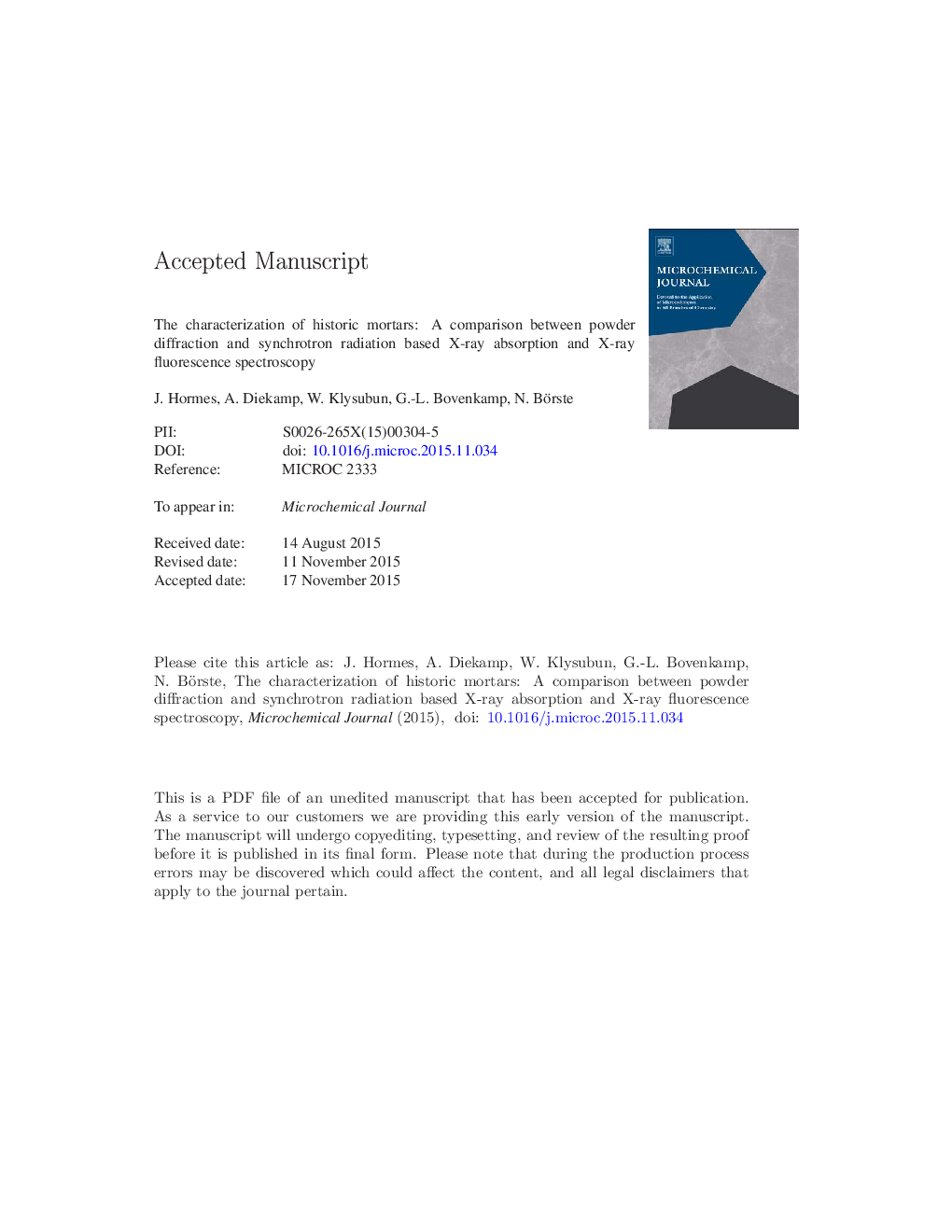| Article ID | Journal | Published Year | Pages | File Type |
|---|---|---|---|---|
| 7641640 | Microchemical Journal | 2016 | 19 Pages |
Abstract
Three mortar samples from different construction phases of the Cathedral of Paderborn (Germany) between ~ and ~ 1220 AC have been investigated using three different and partly complementary techniques: conventional X-ray diffraction (XRD), synchrotron radiation based X-ray fluorescence (SR-XRF), and X-ray absorption near edge structure (XANES) spectroscopy. Samples were sieved and then investigated according to size: smaller and larger than 75 μm. For the small samples XRD detected CaCO3 (calcite) and SiO2 (quartz) as the most abundant compounds and Na(AlSi3O8) (albite) as a minor component. No compounds containing transition metals (e.g. Fe) were observed by XRD. XRF results indicate just a marginal enrichment of binder compounds in the small samples as compared to the large ones. By XRF, in all samples Fe was observed at a very high concentration together with Ti and Zn at high concentrations and some other metals with lower concentration indicating that these metals are in an amorphous form and thus “invisible” for XRD. XANES spectra confirm the XRD result that most Ca exists as calcite, however at least in one sample (the “youngest” one) where the S-concentration is quite high also Ca(SO4) was detected via Ca-K and S-K-XANES spectra. Fe-K-XANES spectra indicated that Fe exists in the mortar samples with valency + 3 as Fe2O3. Most likely, the SiO2 grains are coated with iron oxides that have a high adsorption capability for trace metals explaining in this way the XRF detection of several metals at low concentration.
Keywords
Related Topics
Physical Sciences and Engineering
Chemistry
Analytical Chemistry
Authors
J. Hormes, A. Diekamp, W. Klysubun, G.-L. Bovenkamp, N. Börste,
